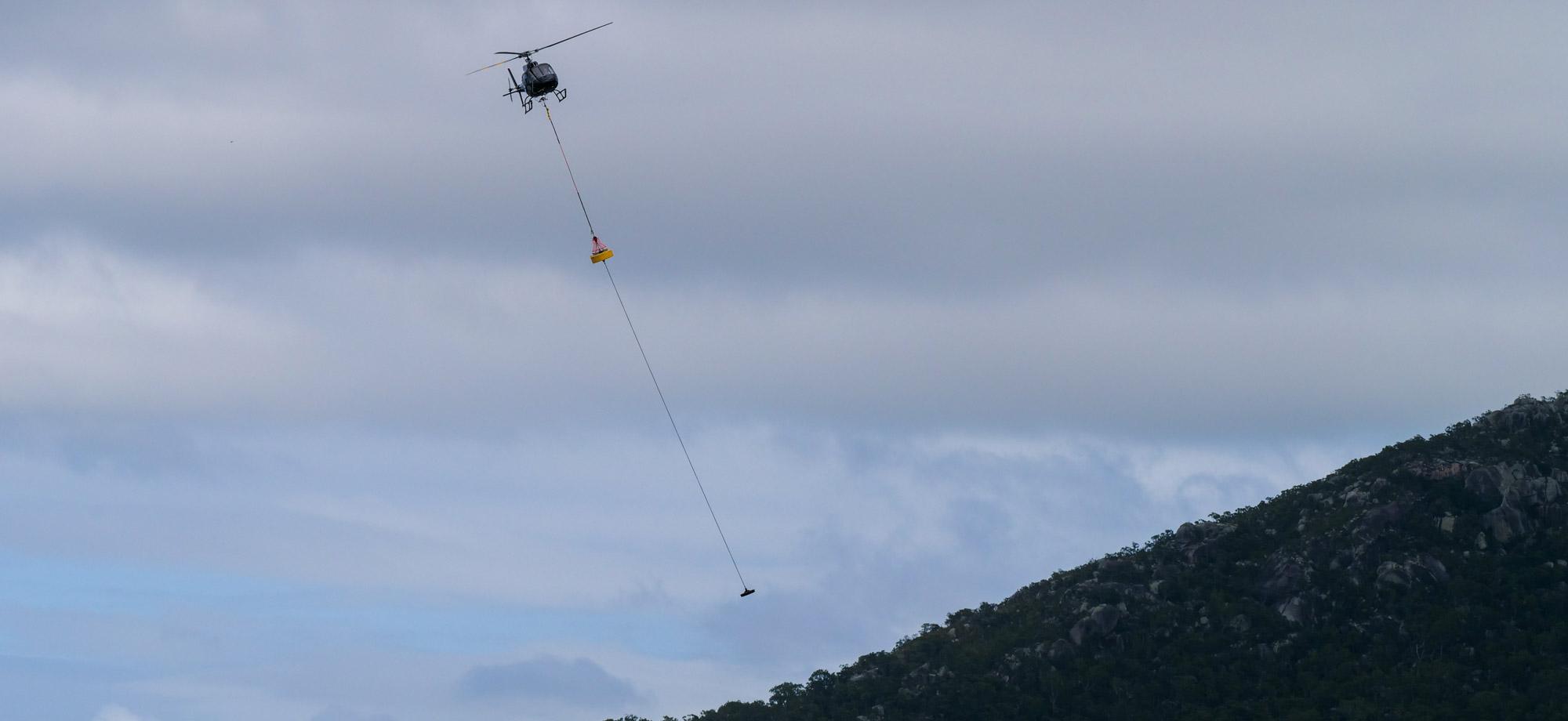AIMS worked with Townsville Helicopters to modify and successfully test a system to deliver and retrieve heavy cargo without human intervention from remote marine locations via helicopter.
Townsville Helicopters trialled the modified Talon Auto-Loc Cargo Hook System at our Queensland Government supported tropical marine technology test range ReefWorks twice in May.
Previously, this system was only used on land.
The helicopter quickly deployed, and then retrieved the modified 375kg AIMS mooring (buoy, chain and anchor) from the waters of the ReefWorks Inshore Test Range and deposited it onto the wharf.
This was achieved without the assistance of land or sea-based personnel, during adverse weather conditions of wind and rough seas.
Townsville Helicopters Chief Pilot Tim Tanner said retrieval of the AIMS buoy was initially trialled on land.
“Phase two consisted of still water testing on a dam,” he said.
“The buoy was equipped with an anchor and a 9m chain to secure the buoy when released.
“It was successfully retrieved four times. However, after that, the Talon probe shifted and the Talon Auto Lock was unable to attach to the probe.”
AIMS senior mechanical engineer Chris Allen said following the still water trial, he modified the buoy to incorporate a rigid probe system to ensure consistent auto lock attachment to the probe.
Industry representatives were invited to the demonstration at ReefWorks last week.
ReefWorks Project Director Melanie Olsen said it was an exciting new capability that could provide marine organisations such as AIMS with alternative, safe methods to deploy and recover moorings and autonomous systems without needing at-sea support crew, especially in adverse weather conditions.
“It enables buoy recovery when time is of the essence, such as in preparation for incoming cyclones,” she said.
Feature image: Jo Hurford



